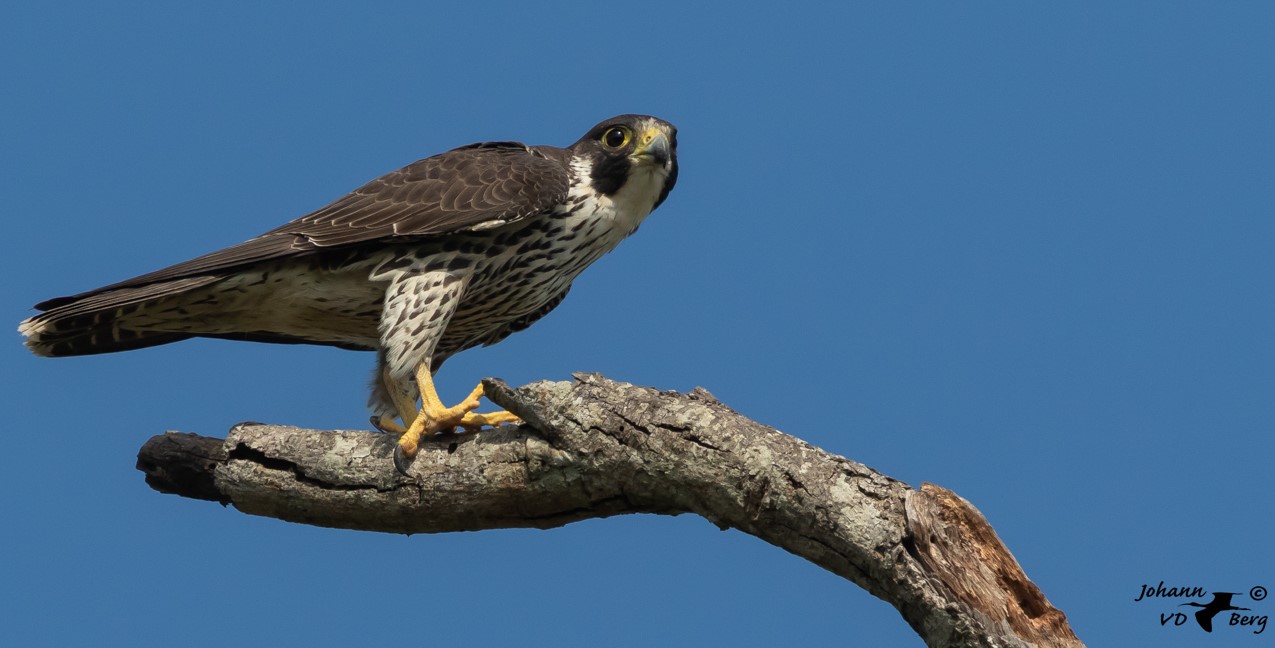|
JOIN OUR MAILING LIST |
At the end of April, we intensified our observations of the Eagles behaviour, and on Friday 4 May, we noticed a marked change in behaviour. Makatsa spent most of the time on the nest, leaving it only for very short periods. The pattern was followed on Saturday and Sunday, and we think that the first egg had been laid.
We now have a period of 44 days to allow for incubation, and after doing our calculations, will monitor very intensely from the middle of June. The very first sighting of prey being delivered to the nest will be a definite indication that the first chick had hatched.
My Raptor of the month is the Peregrine Falcon.
My choice for Raptor of the month, was so to speak, forced on me, as we have a resident pair right here in the Walter Sisulu National Botanical Garden. They are visible and flying around daily, and after an initial bit of aggression, the eagles seemed to have accepted their presence, and the eagles and falcons are often seen flying together in total harmony.
Like the Black Eagles, they prefer cliffs, and make their nests on rock ledges.
The most amazing thing about Peregrine Falcons is the fact that they can achieve speeds more than 300 kilometres per hour in a hunting dive. Their main diet consists of doves. They seldom sour, but achieves height by rapid wing flaps, and using thermals.
They then dive down on an unsuspecting dove below, and the impact at that speed kills the dove instantly.
The photographs are not of our resident pair, but I was fortunate enough to have found this one in the Kruger National Park.





